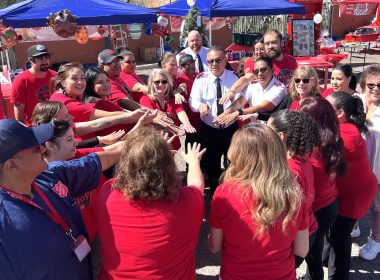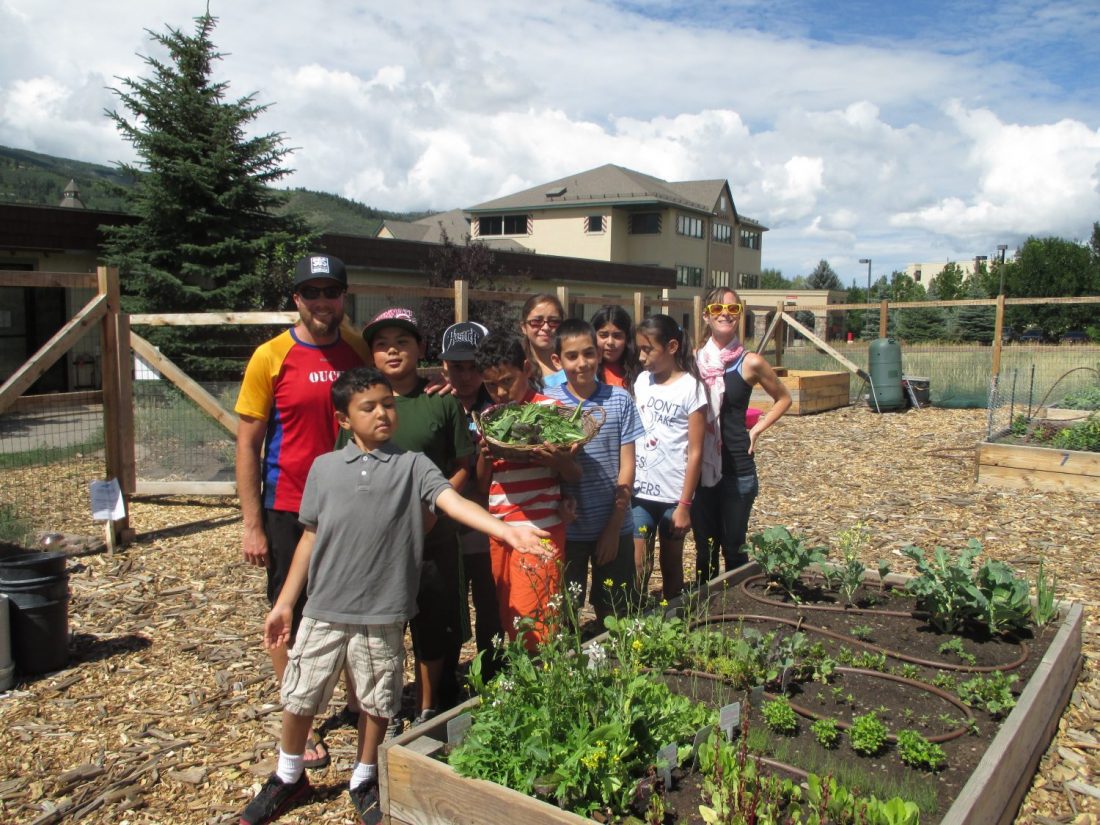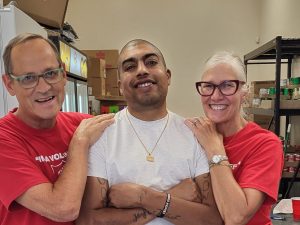Meighen Lovelace needed help from a Salvation Army food bank a decade ago. Now she’s the one helping clients.
 When Meighen Lovelace first walked into The Salvation Army Vail Valley in 2007, she was in crisis, though she didn’t know what the term meant at the time.
When Meighen Lovelace first walked into The Salvation Army Vail Valley in 2007, she was in crisis, though she didn’t know what the term meant at the time.
She was pregnant with her first child. She’d recently lost her job in the food service industry and her then-husband had been laid off from his construction job.
“We went from a very stable income to no income,” she said. “We were homeowners at the time and we didn’t really know what we were going to do.”
Lovelace met with Tsu Wolin-Brown, the center’s coordinator, and walked out of The Salvation Army with more than just a few bags of groceries.
“We didn’t just get a food donation; we got guidance,” Lovelace said. “She was frank with us about having to make some tough decisions in our lives. It was hard for us to see the light at the end of the tunnel.”
The couple lost their home and had to file bankruptcy. But Wolin-Brown helped them find local resources and navigate the complicated situations.
“It was tough,” Lovelace said. “But Tsu was there the whole time saying, ‘You’re not alone. Tons of people are going through this right now. You will get to the other side.’”
Before Lovelace was squarely on “the other side,” she started volunteering at The Salvation Army. Shortly after her first daughter was born, she showed up at The Salvation Army and said, “I want to help.” Lovelace hadn’t been able to find a new job yet, and she wanted to give back to the organization that had helped her during her time of need. “I couldn’t give money or a donation, but I could give my time,” said Lovelace, who grew up in a rough neighborhood in Detroit where “everyone took care of each other…I grew up knowing that you give back,” she said.
Lovelace volunteered off and on for The Salvation Army but it was in 2012 that she found her passion project. Wolin-Brown asked Lovelace to take the lead on a new initiative: an on-site, fenced-in garden with 24 plots and drip irrigation.
From the first time Lovelace got a food donation those years prior she remembered thinking it was too bad there wasn’t fresh food available. She’s since joined the local Food Policy Council, which she now heads.
 Thanks in large part to Lovelace’s hard work, this summer will mark the fourth season that The Salvation Army Vail Valley clients will have access to fresh vegetables along with the usual non-perishable items.
Thanks in large part to Lovelace’s hard work, this summer will mark the fourth season that The Salvation Army Vail Valley clients will have access to fresh vegetables along with the usual non-perishable items.
“Everyone is so excited about fresh food,” she said.
Most of the garden plots go to clients, where along with the free space, the seeds, soil and amendments are all donated. The Salvation Army staff and volunteers teach them how to grow their own food, which essentially takes the “food pantry out of that loop of need,” Lovelace said.
They also replicated a successful Denver program called Produce for Pantries that targets local community garden members, hobby gardeners and those in agriculture production, creating an avenue for people to give back.
“We leave coolers at different community gardens and have volunteers who go around to the different gardens and agriculture production sites in Eagle County and bring back fresh food to the food bank,” she said.
Lovelace volunteers around 30 hours a week in the summer, managing the garden members and several educational programs held at the garden. Local at-risk kids come to the garden twice a week to learn about botany and food production and often end up mentoring the under-age-5 children who attend the Growing Gardeners program.
Last year The Salvation Army started a campaign for an on-site greenhouse, with the goal of growing food year-round. With Wolin-Brown’s guidance, Lovelace wrote her first ever grant proposals and was awarded $10,000 from Eagle County and $10,000 from a private foundation. The money was used to buy a greenhouse, which volunteers assembled. This summer, Lovelace is working on having 10 AmeriCorps youth come and build the internal structure of the greenhouse. The garden is also expanding, with the addition of eight more plots.
The vegetables help to offset some of the food costs for The Salvation Army, Lovelace said, but also serve as a community builder and raise awareness of the organization as a whole. Twelve of the garden plots are open to community members who can rent them for the season. This ends up building the volunteer base, as many start asking questions, learning about The Salvation Army and often times end up volunteering or donating.
“It brings it home for people how much need is in the community,” Lovelace said.
Wolin-Brown was initially drawn to Lovelace’s “vision and drive,” which is why she initially asked her to spearhead the garden, she said.
“She has been so dedicated to providing healthier fare for our clients and to educating all of us on how to grow food that she inspires many people,” Wolin-Brown said.
Now Lovelace’s two daughters, age 4 and 7, both volunteer at The Salvation Army alongside her.
“My older daughter has been volunteering for so long she takes a leadership role in it,” Lovelace said. “She could teach a garden class and she knows how to pack up a food basket. She could step into my shoes.”
At home, instead of playing house or other make believe games, the girls play “volunteer” and pack up food baskets for each other.
“I may have had a bumpy road but I’ve instilled a sense of civic responsibility and compassion in them,” Lovelace said. “That’s how we pay rent to the earth—to give back, be compassionate, and be witnesses for people who may be in a space of suffering.”













